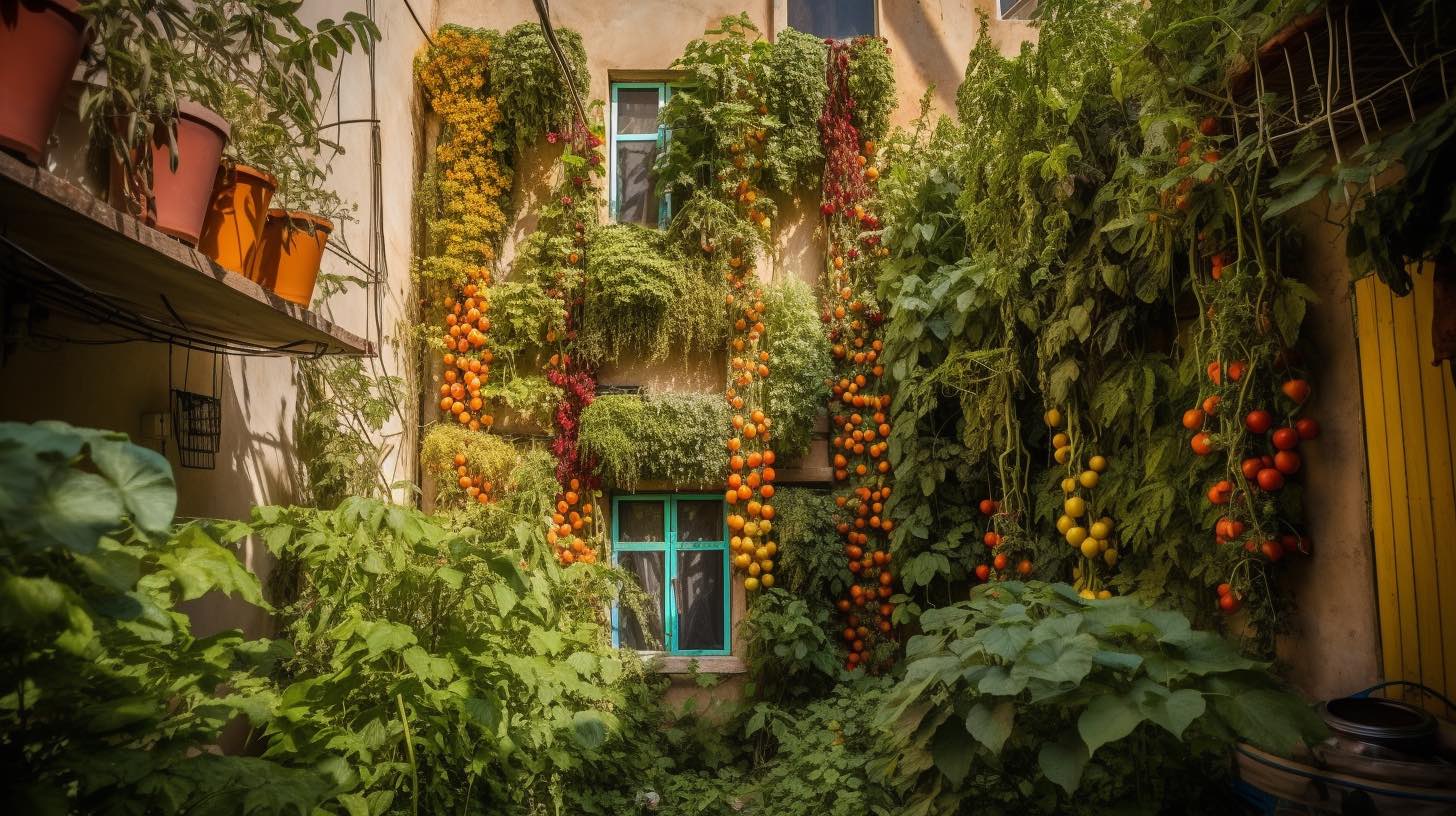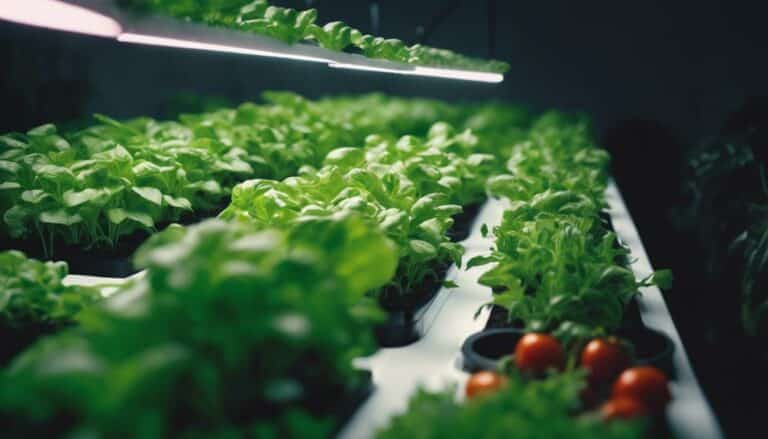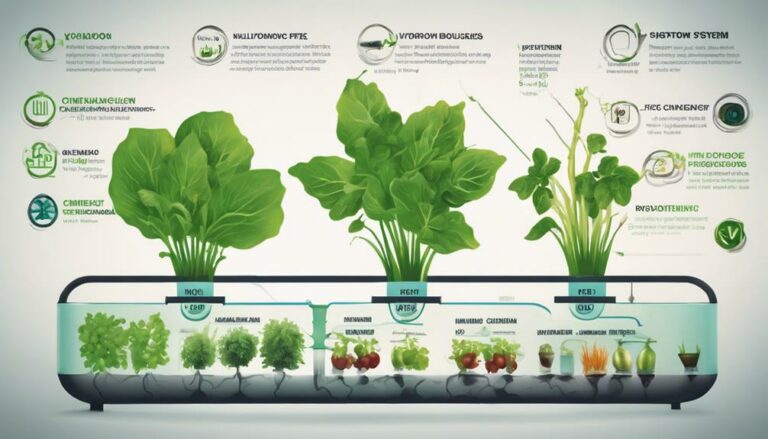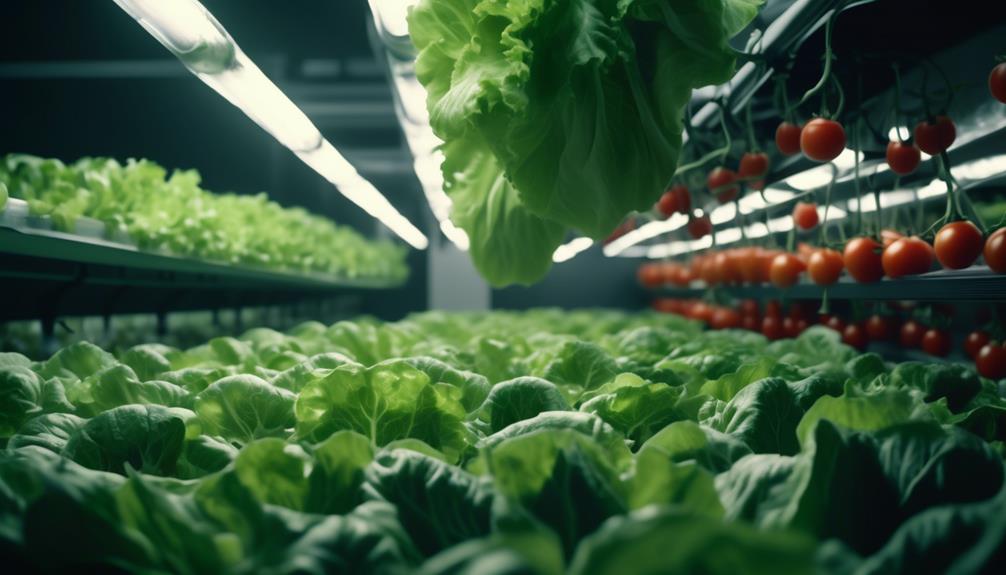In our constant search for inventive garden ideas to address our growing populations and shrinking green spaces, we’ve found an invaluable ally in the concept of vertical vegetable gardens. As gardeners, we’ve come to embrace this innovative technique to transform our small space horizontal expanses into thriving vertical crops, truly a novel way to grow.
Table of Contents
Key Takeaways
- Vertical gardening, an innovative way for a gardener to maximize underutilized vertical space, truly enhances space efficiency, making it a perfect fit for small spaces.
- Picking the right vegetables that match the structure, like squash for a sturdy trellis, and understanding their root systems is a gardener’s secret to a successful vertical garden.
- Various vertical structures, like trellis towers for vine plants, repurposed pallet and gutter gardens for climbing vegetables, and hanging baskets, are integral garden ideas to creating functional vertical gardens.
- Regular maintenance, precise gardening techniques, and monitoring for pests and diseases are necessary for optimal functionality and a successful harvest in vertical vegetable gardens.
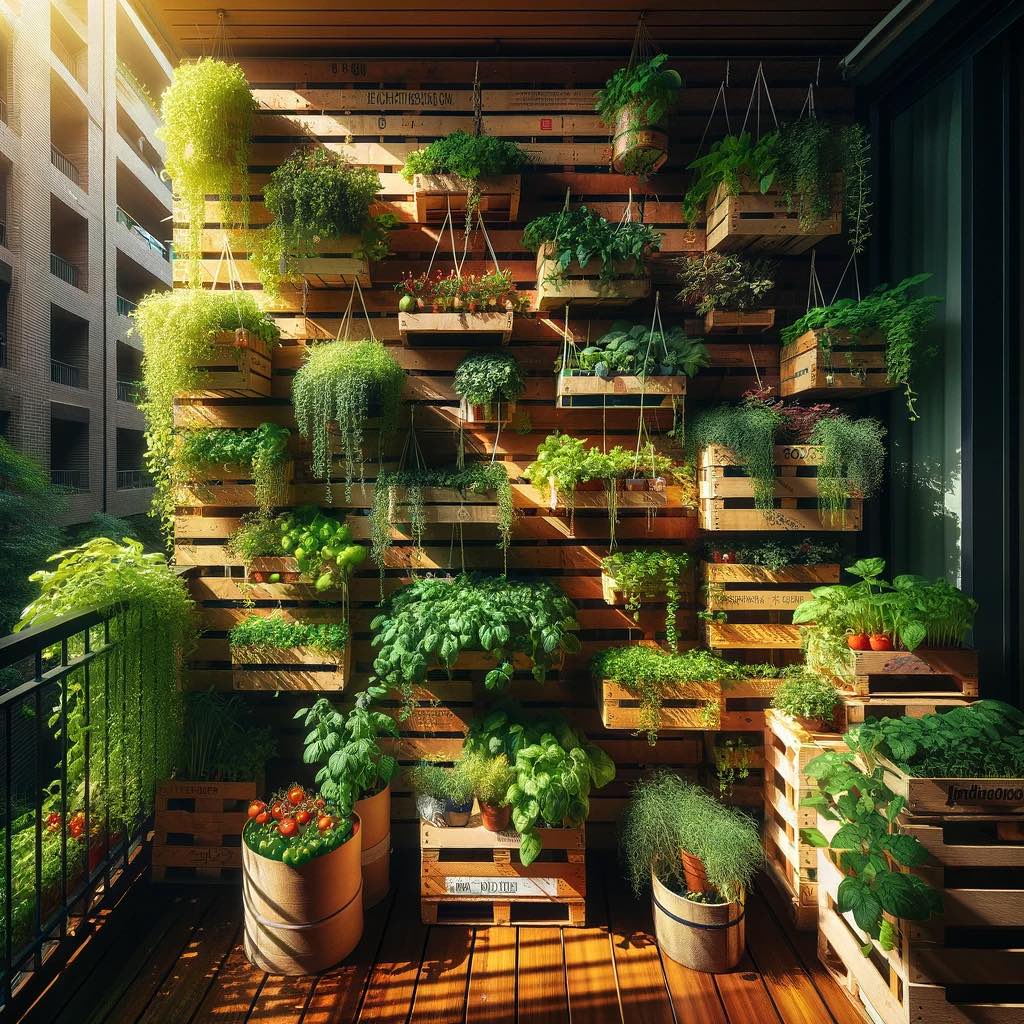
As we stack and suspend, using vine plants and nets, we’re not just reimagining gardening, but also how we live and eat, particularly for those who want to grow their food in our modern world. By maximizing our upward potential through vegetables vertically, we’re nurturing leafy towers of kale, beans, herbs, and even squash, turning every sunny wall or railing into a potential bountiful harvest.
We’re crafting new gardening ideas in our green havens, combining creativity and practicality, with each vertical plot serving as a symbol of our ability to adapt even the smallest spaces. Our approach marries aesthetics with efficiency, proving that limited space isn’t a barrier, but a canvas for our green-thumbed aspirations. Join us in this new way to grow, as we cultivate our vertical vegetable gardens, where innovative garden ideas bloom in every direction.
Understanding Vertical Gardens
We’ll delve into the concept of vertical gardening, which leverages the often underutilized vertical space to grow plants efficiently. This innovative approach allows for growing vertically to save space, which is invaluable in urban settings where horizontal land is scarce. In vertical gardens, structures like trellises for beans, tripods for tomatoes, arches for vine plants, and pergolas serve as the backbone for the growth of plants. The essence of vertical gardening and the idea behind it for the gardener is to exploit upward space, minimizing the footprint on the ground and maximizing small spaces.
Container gardening is integral to this way to grow, where bins and pots for vegetables like tomatoes are arranged vertically. This not only enhances the aesthetic appeal of the garden, but this also facilitates better air flow around the plants, making it yet another gardening idea for the urban gardener to consider. As a result of growing vegetables vertically, there’s a marked reduction in the incidence of diseases and pests that are often prevalent in traditional, crowded garden settings.
Moreover, increased exposure to sunlight while growing vertically, like with tomatoes and squash, promotes healthier plant growth and may also lead to increased yields. When we consider the practicalities of vertical gardening, maintenance and harvesting become less labor-intensive. This is because the vertical arrangement provides easier access to the plants at a comfortable height. It’s clear that vertical gardening is a smart solution for making the most of limited spaces while reaping the benefits of a bountiful harvest.
The Many Benefits Of Growing A Vertical Vegetable garden
Our exploration of vertical gardens reveals that one of the key benefits of growing vegetables up rather than out is the significant space efficiency this method offers. By opting for the vertical approach, we’re able to save space without sacrificing crop yield, which is particularly advantageous in urban settings where horizontal real estate is at a premium. Here are three distinct benefits of vertical growth:
- Space Optimization: A vertical garden allows us to cultivate a variety of vegetables in a compact area. By stacking plants upward, we transform a small footprint into a lush, productive garden.
- Enhanced Airflow: Better air circulation is achieved between plants, reducing the risk of disease. This optimized airflow helps to improve air quality around the garden, creating a healthier environment for both plants and people.
- Efficient Water Drainage: Vertical garden structures often include built-in drainage holes. These ensure excess water drains away quickly, preventing root rot and other moisture-related issues, which are detrimental to plant health.
Through vertical gardening, we’re not just innovating for the sake of space. We’re also contributing to more sustainable and efficient urban agriculture practices, combining aesthetics with functionality to redefine what it means to grow vegetables in the modern world.
Choosing the Right Vegetables for Your Tower Garden
Often, we overlook the importance of selecting vegetables that not only thrive in a vertical setting but also suit our specific gardening needs and space constraints. When we’re growing vertically to save space, choosing the right plants is crucial. Vining tomatoes, for instance, are ideal for vertical gardens due to their natural climbing habit and the ease with which they can be trained up a support structure. Pole beans are another excellent choice, as they readily wind around trellises and poles, yielding a substantial crop in a compact vertical space.
On the other hand, bush beans aren’t suitable for vertical gardens since they don’t climb and can take up valuable ground space. For those of us seeking innovation, a hanging basket can be an ingenious solution for crops like strawberries or cherry tomatoes, adding an aesthetic appeal to our vertical garden while being incredibly space-efficient. We must match our vegetables to the structure of our vertical system; for instance, heavier fruits like melons require sturdy supports. We should also consider the root systems; shallow-rooted vegetables adapt better to the confined soil volumes in vertical setups.
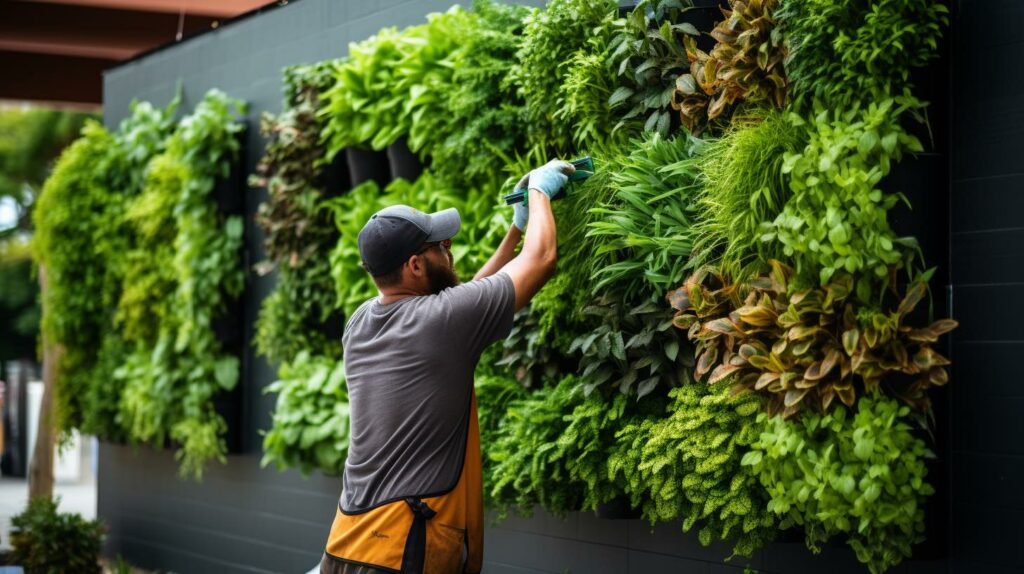
Grow More in Less Space
Looking to maximize your gardening potential? Growing more in less space is a great way to grow your own produce and make the most of your gardening space. With the right planning and techniques, you can cultivate a bountiful harvest even in a small garden or patio. Utilizing vertical gardening, raised beds, and container gardening, you can grow a variety of fruits, vegetables, and herbs without needing a large plot of land. By doing so, you not only save space, but also make the most of the growing season, allowing you to enjoy fresh, homegrown produce all year round. So, don’t let limited space hold you back from creating your own thriving garden. Get inspired and start growing more in less space today. You’ll be amazed at what you can achieve and the abundance of fresh, homegrown goodness you can bring to your table.
Sowing in Suburbia – Reasons to grow vertically
Vertical gardening offers many advantages that can motivate you to start growing your plants upwards. Firstly, it maximizes the use of limited space, making it perfect for urban dwellers with small outdoor areas. By growing vertically, you can expand your garden without needing extra land. This means you can grow more of your favorite plants and increase your overall yields. Additionally, growing plants vertically can provide better air circulation and sunlight exposure, leading to healthier and more productive crops. Vertical gardening also reduces the risk of common gardening problems, such as pests and diseases, since plants are less likely to be overcrowded. Moreover, it can be an aesthetically pleasing addition to any outdoor area, creating a visually appealing display of greenery and flowers. Furthermore, vertical gardening can be an excellent way to save time and effort, as it often requires less maintenance and weeding compared to traditional horizontal gardening. Finally, it’s a convenient and practical way to garden, as it allows for easier access to your plants, making watering, pruning, and harvesting simpler tasks. Overall, the numerous benefits of vertical gardening make it a compelling choice for anyone looking to optimize their garden space and increase their harvests. So, what are you waiting for? Start growing vertically and reap the rewards of a more efficient and productive garden.
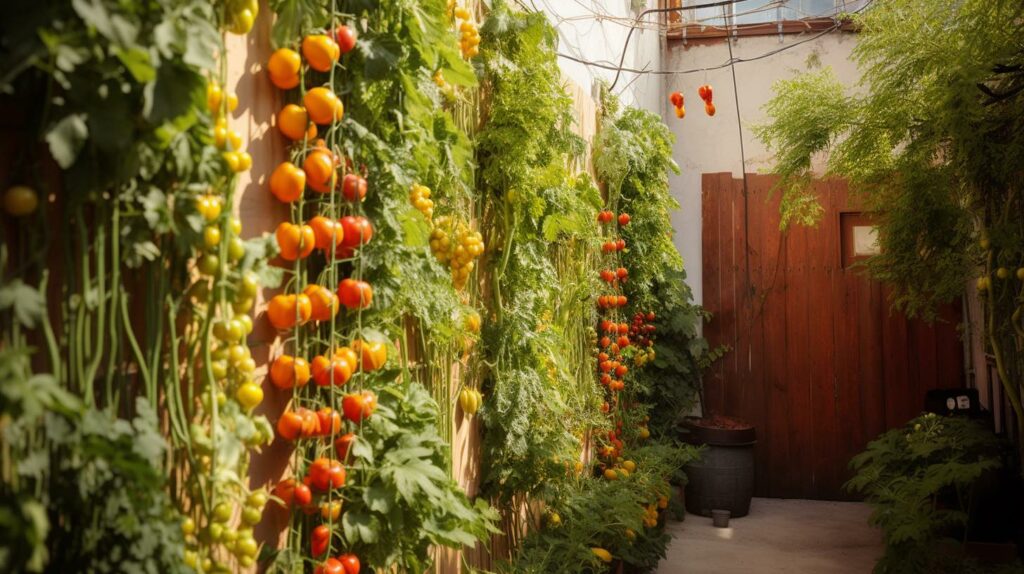
Types of Vertical Planters and Structures
Are you looking to add some greenery to your space but don’t have a lot of room for traditional planters? Consider vertical planters and structures as a creative and space-saving solution. There are several types of vertical planters to choose from, each with its own unique benefits. Vertical garden panels are a great option if you want to create a living wall of plants. These panels can be easily mounted to any wall and are designed to hold individual plants, allowing for easy customization and maintenance.
Another option is a freestanding vertical planter, which is perfect for adding vertical interest to outdoor areas such as patios and balconies. These planters often feature multiple levels, giving you the opportunity to grow more plants in a smaller footprint. If you want to take your vertical gardening to the next level, consider a vertical garden tower. These structures can hold a large number of plants in a compact space, making them perfect for any size garden. No matter which type of vertical planter or structure you choose, the end result will be a beautiful and uplifting addition to your space. Get creative and start exploring the world of vertical gardening to transform your space into a lush and vibrant oasis.
How we chose the best hydroponic vertical garden tower
We understand the importance of sustainability and the desire to grow your own fresh produce, which is why we knew we had to find the perfect solution. After extensive research and in-depth analysis, we identified several key factors that were essential in making our decision. First and foremost, we looked for a tower that was easy to set up and maintain, because we believe that gardening should be accessible to everyone, regardless of their experience level. Additionally, we prioritized durability, seeking a tower that was built to last and withstand the test of time.
We also considered the efficiency and effectiveness of the system, making sure that it would provide optimal growing conditions for a variety of plants. And of course, we took into account the overall design and aesthetic appeal, because who says a functional garden can’t also be visually stunning? After weighing all of these factors and comparing numerous options, we finally landed on the perfect hydroponic vertical garden tower. And now, we’re excited to share our findings with you, so you too can experience the joy and satisfaction of growing your own fresh produce at home. Let’s start this new journey together and dive into the world of hydroponic vertical gardening!
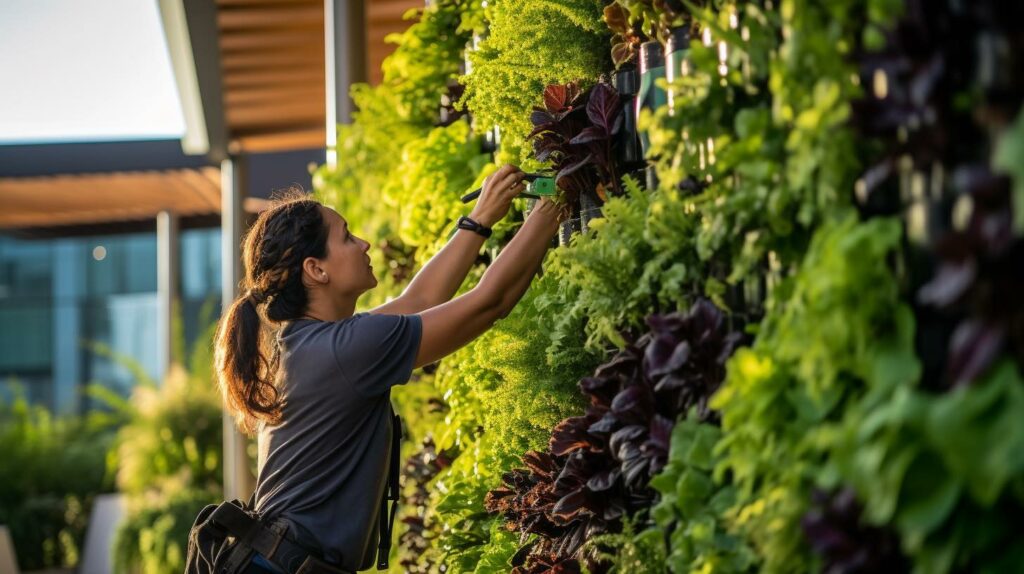
What Vegetables Grow Well in a Vertical Garden?
If you’re considering starting a vertical garden, you might be wondering: what vegetables grow well in a vertical garden? The good news is, there are plenty of options for vegetable plants that thrive in a vertical garden setting. You can grow tomatoes, a variety of vegetables and herbs like salad greens, compact vegetables and herbs like peppers, and even climbing plants like beans and cucumbers. Vertical gardens are a fantastic way to maximize your growing space, whether you have a small balcony or a large backyard. By utilizing vertical space, you can grow a wide range of vegetables and herbs without taking up much floor space. Plus, growing your own produce is not only satisfying, but it also allows you to enjoy fresh, organic vegetables and herbs all season long. Imagine stepping outside to pick a ripe tomato or a handful of fresh herbs for your salad. So, if you’re looking for a fun and innovative way to grow your own food, consider starting a vertical garden and exploring the endless possibilities of what you can grow. With a little creativity and some gardening know-how, your vertical garden can become a productive and beautiful addition to your outdoor space.
Want to Learn How to Grow Vegetables and Fruit in Your Backyard?
Learning how to grow your own fruits and vegetables can be a rewarding and fulfilling experience. Not only will you have a sense of pride in cultivating your own food, but you’ll also have access to fresh, organic produce right in your backyard. Imagine the satisfaction of plucking a ripe tomato from the vine or picking a juicy apple from your own tree. When you grow your own food, you have the power to ensure that it is free from harmful pesticides and chemicals. Instead, you can nurture your plants with care and watch them thrive under your green thumb.
Whether you have a spacious garden or just a small plot of land, there are endless possibilities for what you can grow. From vibrant tomatoes and crunchy cucumbers to luscious strawberries and sweet berries, the options are endless. By learning how to grow your own fruits and vegetables, you are also taking a step towards sustainability and self-sufficiency. So why wait? Start your own backyard garden today and experience the joy of watching your own produce flourish!
Essential Vertical Structures
Considering essential vertical structures, we’re focusing on those that best support the diverse range of vegetables in our garden. To create the optimal vertical garden, it’s crucial to implement structures that not only maximize vertical space but also cater to the specific growth habits of our plants. Here’s how we envision some innovative structures:
- Trellis Towers: Constructed from durable materials such as cedar or metal, these towers provide a sturdy framework for climbing vegetables. We can weave plant ties through the lattice to secure vining plants like cucumbers and pole beans, encouraging them to ascend with ease.
- Pallet and Gutter Gardens: A repurposed pallet garden allows for a multi-tiered approach, where lettuce and herbs thrive in horizontal slats. Similarly, a gutter garden, affixed to a sunny wall, can host a cascade of strawberry plants, ensuring a fruitful harvest without encroaching on ground space.
- Hanging Baskets: Designed for aerial cultivation, these baskets can suspend cherry tomatoes and peppers. We’ll select strong supports for installation, ensuring they can bear the weight of soil, water, and ripe vegetables.
Our choices in vertical structures are deliberate, aiming to integrate seamlessly with micro-irrigation systems. By considering the individual needs of our plants, we’ll achieve a vertical garden that’s as functional as it’s innovative.
DIY Vertical Garden Projects – Grow Vegetables Vertically
Building on our exploration of essential vertical structures, we’ll now delve into practical DIY projects that allow us to create our own vertical vegetable gardens with ease. One innovative way to make a vertical garden is by repurposing pallets. Pallet gardens can be outfitted with landscape fabric and filled with soil to support a variety of vegetables, making efficient use of limited space. For those with even tighter spaces, hanging window boxes offer a smart solution. These can be fastened securely outside windows, providing an excellent environment for herbs and small vegetables, while also adding aesthetic value to your home’s exterior. Another creative approach involves using plastic bottles as planters. By cutting them open and securing them to a sturdy frame, you can establish a cascading vertical garden suitable for small root vegetables and herbs. This not only recycles materials but also creates a conversation piece. Each of these projects requires a precise and technical approach. Measurements must be accurate, and the choice of materials should ensure durability and plant health. Whether it’s a trellis panel with pots for a living wall or a vegetable arch with galvanized metal, the aim is to combine functionality with innovative design in your vertical gardening efforts.
Why Try Vertical Gardening?
By utilizing the vertical space in your garden, you can maximize your growing area and create a stunning visual display. Not only does vertical gardening allow you to grow a wider variety of plants in a smaller space, but it also offers numerous benefits such as easier maintenance, better air circulation, and reduced risk of pests and disease. Plus, vertical gardening can be a great way to add a touch of greenery to small outdoor or indoor spaces, making it an ideal option for urban gardeners and apartment dwellers. With the rise in popularity of sustainable living and a focus on environmental consciousness, vertical gardening offers an eco-friendly way to grow your own produce and beautify your living space. So why not give it a try and see what vertical gardening can do for you? Whether you’re a seasoned gardener looking to try something new or a beginner eager to get started, vertical gardening is a versatile and exciting approach that is sure to inspire and motivate you. So roll up your sleeves, grab your gardening tools, and let’s get started on this exciting green adventure!
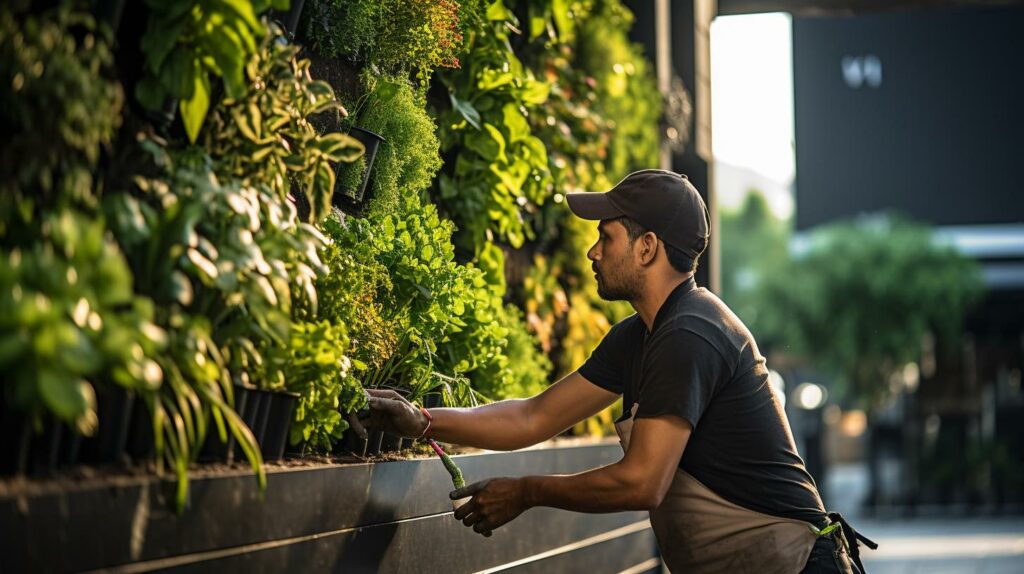
Vertical Support – Managing Soil and Water
We regularly ensure that our vertical garden’s soil mix is both nutrient-rich and well-draining, and we’ve set up a drip irrigation system for consistent, efficient watering. Understanding that plants need specific conditions to thrive, we’ve carefully selected a blend of potting soil that promotes healthy root development and optimal plant growth. To create the ideal environment for our vertical garden, we consider the following:
- Soil Composition: A mix of peat, pine bark, and perlite ensures proper moisture retention while allowing excess water to drain away, preventing root rot.
- Irrigation Efficiency: Our drip irrigation system delivers water directly to the roots, reducing evaporation and ensuring that each plant receives the necessary hydration.
- Drainage and Support: Installing landscape fabric at the bottom of raised beds and containers helps maintain soil integrity and prevents erosion, while sturdy supports keep our plants securely in place.
Gydroponic Vertical Garden Maintenance
Maintaining our vertical garden’s health is of utmost importance to us. Therefore, we regularly inspect plant supports and irrigation systems to ensure optimal functionality. We understand that the steady growth and bountiful harvests of our garden depend on the reliability of these structures. To achieve efficient vertical garden maintenance, we make sure our gardening techniques are precise and tailored to the demands of vegetables that grow vertically. This involves checking micro or drip irrigation systems for even distribution of water, preventing both over and under-watering.
In line with the latest gardening innovations, we take the time to match each vegetable to an appropriate vertical structure. We consider factors such as the plant’s mature weight and growth habit to prevent structural collapse and promote healthy, upward growth. Our systematic approach to vertical vegetable gardens goes beyond just maintaining the structures. We also monitor for pests, diseases, and nutrient deficiencies with a keen eye, addressing any issues promptly to safeguard our crops. Furthermore, we have integrated creative solutions into our vertical garden maintenance practices. For example, we train fruit trees against wire supports, optimizing space and sun exposure. We also incorporate upcycled bottles or garden towers to push the boundaries of conventional gardening.
Vertical Growing – Harvesting Your Vertical Garden
As we transition from the meticulous upkeep of our vertical gardens, harvesting becomes a rewarding phase where careful planning and effort culminate in the collection of ripe, nutritious vegetables. The vertical garden has allowed us to grow an abundance of produce without the need for extensive horizontal space. Now, we’re ready to reap the benefits. To vividly illustrate the harvesting process, consider the following:
- Strawberry Hanging Baskets: We gently lift each berry, feeling its plump ripeness, and with a twist, it’s freed, ready to be savored.
- Pallet Herb Patches: Our fingers glide over the aromatic leaves, selecting the most lush, before snipping them to enhance our next culinary creation.
- Salad Tower Greens: We harvest handfuls of tender salad leaves, the freshness evident with each crisp snap, promising a delightful crunch in our salads.
Harvesting from a vertical vegetable garden requires precision. We carefully navigate the vertical arrangements to ensure we don’t disturb the intricate ecosystem we’ve fostered. Each vegetable is picked at its peak, ensuring maximum flavor and nutritional value. Our innovative approach to vertical gardening not only conserves space but also delivers a bountiful harvest that’s as rewarding to gather as it’s to consume.
Common Vertical Gardening Challenges
Despite our best efforts, we’ve encountered several challenges in our vertical vegetable garden, from pest invasions to uneven water distribution. Ensuring that the structures are strong enough to hold the mature plants is paramount. We’ve had to carefully consider the weight capacity to prevent any unfortunate collapses. Additionally, we’ve faced difficulties with proper drainage, which is crucial to avoid detrimental waterlogging and root rot. Selecting the right growing space for each plant’s characteristics requires technical knowledge and precision. It’s also been a challenge to find materials that are not chemically treated, as we strive for an organic garden. Training plants to grow vertically, such as along a fence or using tomato cages, demands regular pruning to prevent overcrowding. Here’s a table that outlines some common challenges we’ve encountered:
| Challenge | Description | Our Solution |
|---|---|---|
| Pest Control | Insects can easily infest | Regular monitoring, organic pesticides |
| Water Distribution | Ensuring even watering | Drip irrigation systems |
| Weight Support | Structures must be robust | Reinforcement with sturdy materials |
| Plant Training | Guiding growth vertically | Use of trellises and cages |
| Material Safety | Avoiding harmful substances | Sourcing untreated, safe materials |
Through innovative solutions, we’re overcoming these hurdles to maintain a thriving vertical vegetable garden.
Expanding Your Vertical Vegetable Garden Ideas
We’ve discovered three effective strategies to expand our vertical vegetable garden, enhancing both its productivity and variety.
- Incorporate Modular Wall Planters: To save space and grow a vertical vegetable garden more efficiently, we’ve started using modular wall planters. These systems allow for easy expansion upwards or sideways and can be fitted in almost any sunny spot. By adding more modules, we can cultivate a wider range of vegetables, herbs, and even edible flowers, maximizing our garden’s potential.
- Employ Vertical Stacking Containers: Stackable containers have revolutionized our approach to gardening vertically. They not only utilize vertical space superbly but also enable us to grow multiple vegetable layers. This tiered setup is ideal for small root vegetables and leafy greens, substantially increasing our yield per square foot.
- Utilize Convertible Trellis Systems: We’ve begun to integrate convertible trellis systems, which can be adjusted to support the growth of different plants throughout the season. This flexibility ensures that we can adapt to the needs of various climbing vegetables, like beans and peas, while also making the most of every available sunny spot and vertical surface in our garden.
Frequently Asked Questions
What Vegetables Are Good for Vertical Garden?
We’re recommending pole beans, peas, and tomatoes for their climbing ability, as well as compact herbs and greens like basil and baby kale, which thrive when strategically arranged in a space-saving, upward growth pattern.
What Plants Grow Best in a Vertical Garden?
We’ve found that pole beans, climbing peas, tomatoes, and cucumbers excel in our innovative gardening approach, utilizing vertical space efficiently and offering bountiful harvests even in the most compact urban settings.
What Vegetables Grow Straight Up?
We’re climbing new heights with our veggies—pole beans, peas, tomatoes, and cucumbers excel when reaching skyward, boasting both space savvy and bountiful harvests for those eyeing innovative, precision gardening.
What Are the Cons of Vertical Gardening?
We’ve found that increased monitoring and careful weight management are necessary drawbacks, as well as more frequent fertilizer applications and strategic pest control in our innovative gardening approach.
Conclusion
In our lofty green realms, we’ve outwitted the concrete sprawl, thumbing our noses at the tyranny of horizontal space. Our veggies, perched in their aerial estates, scoff at traditional dirt-bound brethren. We’ve turned every inch skyward into a verdant victory—a high-rise harvest that defies the very notion of ‘acreage.’ So, we’ll keep stacking our chlorophyll castles, one plant at a time, in this verdant vertical dance of abundance. Who needs sprawling fields when the sky’s the limit?

